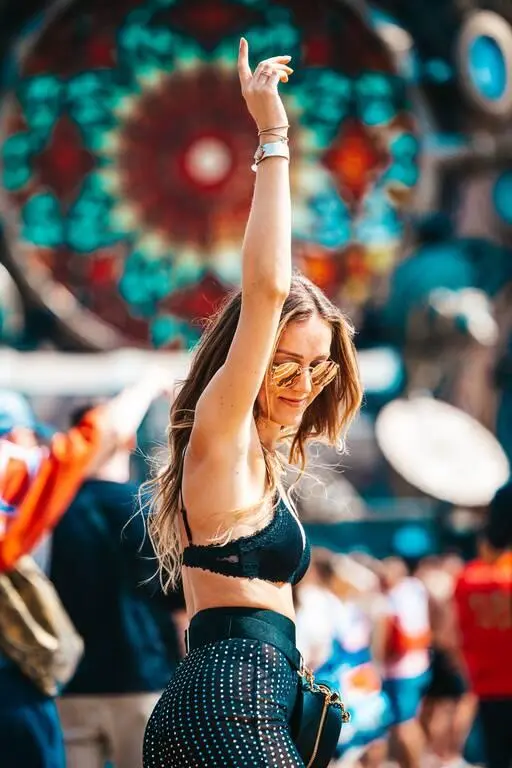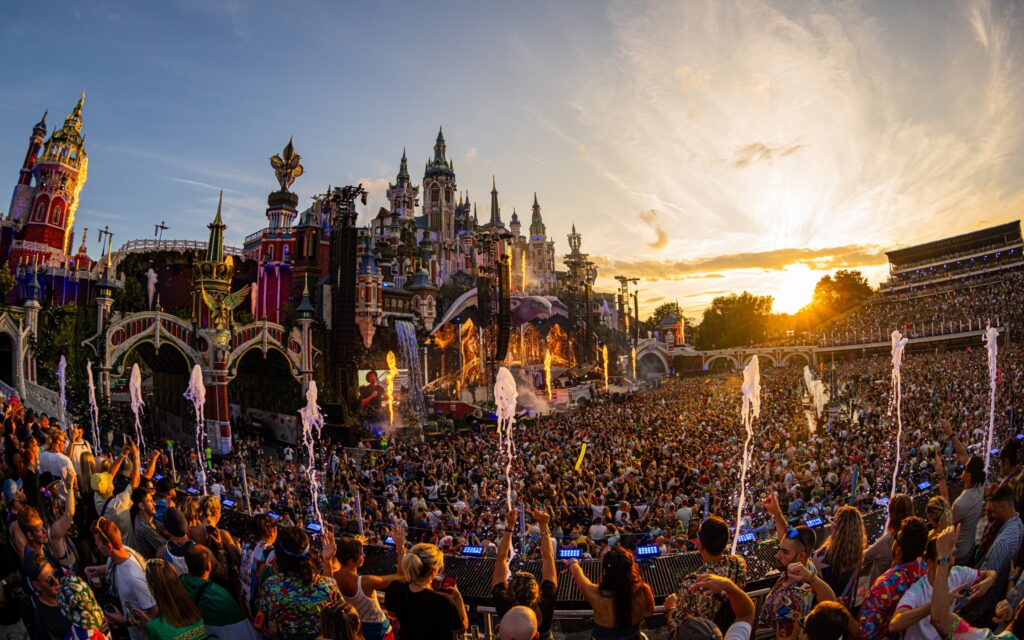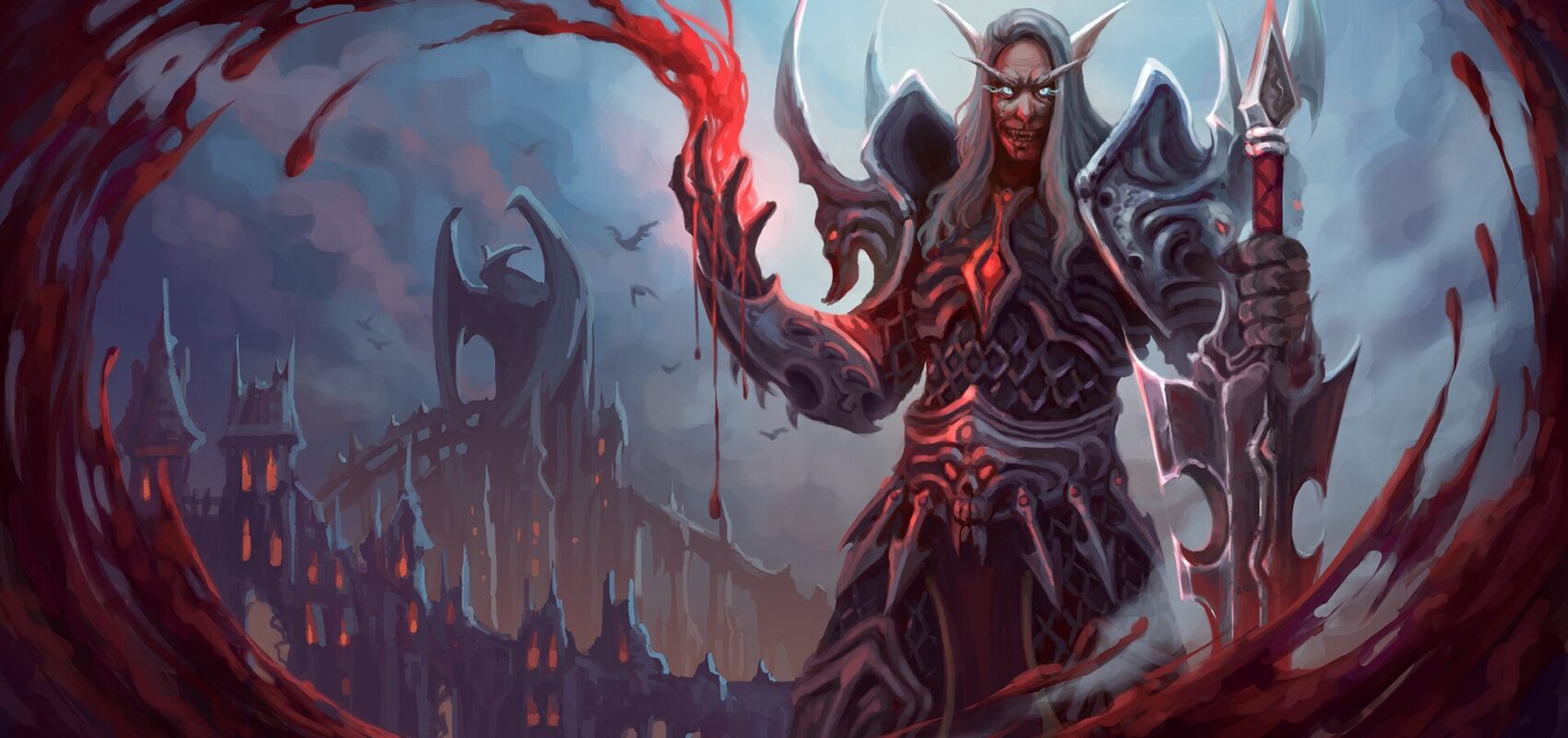For centuries, the enigmatic figure of the vampire has captured human imagination and curiosity. From ancient folklore to contemporary pop culture, vampires have been depicted in various forms, each iteration adding to their mystique. These immortal beings, often portrayed as both seductive and sinister, offer a fascinating glimpse into the fears, desires, and cultural values of different societies. Join us as we delve into the rich tapestry of vampire lore, exploring how these creatures have evolved and why they continue to enthrall us.






In the moonlit night of 15th-century Eastern Europe, a chilling tale of a bloodthirsty revenant began to circulate, giving birth to the legend of the vampire. “The dead travel fast,” wrote Bram Stoker in his seminal novel, Dracula, encapsulating the swift spread of vampire lore across continents and centuries. But what is a vampire, really? According to folklore, a vampire is an undead creature that sustains itself by consuming the blood of the living. The earliest mentions of vampires can be traced back to ancient civilizations, including Mesopotamia and Greece, where myths spoke of demonic entities and spirits that would drink blood. Over time, these stories evolved, blending with local superstitions and fears, ultimately shaping the vampire myth as we know it today. From the plague-ridden streets of medieval Europe to the glamorous portrayal of vampires in modern films and literature, these creatures have adapted to reflect the anxieties and fascinations of each era.
Ancient Myths
The concept of vampiric entities has existed for millennia, with early iterations of these bloodsucking creatures appearing in the myths and legends of various ancient cultures around the world.
In Ancient Greece, the Lamia was one such entity, described as a beautiful queen cursed by the gods to become a child-devouring monster. According to legend, Lamia was once a lover of Zeus, but when Hera, Zeus’s wife, discovered the affair, she killed Lamia’s children. In her grief and rage, Lamia transformed into a monstrous creature who roamed the night, seeking vengeance by devouring the children of others. This tale reflects the Greek understanding of curses and divine retribution, linking vampirism to deep emotional torment and punishment from the gods. Other Greek myths mention the Empusae, demonic beings who seduced men before drinking their blood, further illustrating the early roots of vampiric lore in Greek culture.
In China, the Jiangshi is a reanimated corpse that feeds on the life force or “qi” of the living. Unlike the seductive vampires of later Western lore, the Jiangshi was depicted as a stiff, hopping corpse with outstretched arms, often seen wearing traditional burial garments. These creatures were believed to be created when a deceased person’s soul failed to leave the body, causing the corpse to become animated. The fear of Jiangshi was so pervasive that it influenced burial practices, including the placement of mirrors, charms, and the use of cinnabar to prevent reanimation. Jiangshi legends often included elaborate rituals and talismans used by Taoist priests to exorcise these malevolent beings, showcasing the deep intertwining of religion and folklore in ancient Chinese culture.
In Mesopotamian mythology, we encounter the Ekimmu, spirits of the dead who wandered the earth due to improper burial or unresolved issues in life. These restless spirits were believed to attack the living, causing physical ailments and mental distress. Unlike the modern vampire, the Ekimmu did not necessarily drink blood but rather drained the vitality and life essence from their victims. The ancient Mesopotamians employed various rituals and protective measures to ward off these malevolent spirits, highlighting their deep-seated fear of the dead and the afterlife. In addition to the Ekimmu, Mesopotamian mythology also included the Utukku, another type of vengeful spirit believed to torment the living, further underscoring the region’s rich tradition of ghostly and vampiric folklore.
Medieval Europe
During the medieval period, vampire legends evolved significantly, particularly in Eastern Europe. The Slavic vampire, known as the “upir,” was feared as a revenant that would rise from the grave to prey on the living, especially its own family members. The upir was often associated with a sudden and unexplained death, leading to widespread panic and the implementation of various folk remedies to prevent its return. These measures included burying the corpse with a sickle around its neck, placing garlic in the mouth, or driving a wooden stake through the heart.
The belief in vampires was so strong that it led to a phenomenon known as “vampire panics.” These panics often followed outbreaks of disease, such as the plague, which caused many deaths in a short period. People would exhume bodies to check for signs of vampirism, such as a bloated appearance or blood at the mouth, which were actually natural processes of decomposition. This practice was particularly prevalent in regions like Transylvania and Serbia, where vampire lore was deeply ingrained in the cultural consciousness.
In medieval Europe, the idea of the vampire was not limited to peasants and folklore. Even the educated classes, including priests and scholars, wrote treatises on vampires. The 18th century saw a surge in documented cases of alleged vampirism, with government officials and religious leaders investigating reports of the undead. For example, in 1732, the case of Arnold Paole, a Serbian soldier, captured widespread attention. Paole was believed to have become a vampire after his death, attacking villagers who subsequently died of mysterious ailments. His body was exhumed, and it was reported to be in a vampiric state, leading to his reburial with traditional anti-vampire measures such as staking and burning.
One of the most detailed accounts from this period comes from the region of Croatia, where a village named Kringa experienced a vampire scare in the 17th century. A man named Jure Grando, who had died and was buried, was reported to have returned from the grave and terrorized the villagers. The local priest eventually led an exhumation and decapitation of the corpse, putting an end to the disturbances. This incident, documented by a priest named Georgius Soterich in 1672, is one of the earliest recorded cases of vampire hysteria. Such cases reveal how deeply ingrained and widespread vampire beliefs were, affecting all levels of society.
Among the numerous figures associated with vampirism, Vlad the Impaler and Countess Elizabeth Báthory stand out as the most infamous.
Vlad the Impaler, also known as Vlad Dracula, ruled Wallachia in the 15th century and gained notoriety for his brutal methods of punishment, most notably impalement. His cruelty and the legends that surrounded him inspired Bram Stoker’s fictional character, Count Dracula. Vlad’s penchant for bloodshed and his association with the Dracula name created an enduring link between him and the vampire mythos. Vlad’s reign was marked by a fierce defense against Ottoman invasions, during which he employed psychological warfare, using impalement to instill terror in his enemies. This reputation for savagery, combined with his actual surname “Dracula,” derived from his father’s membership in the Order of the Dragon (Dracul), cemented his legacy as a historical figure closely tied to the vampire legend.
Countess Elizabeth Báthory, a Hungarian noblewoman from the 16th century, is another figure shrouded in vampire lore. Accused of torturing and killing hundreds of young girls, Báthory was rumored to bathe in their blood to preserve her youth. While the true extent of her crimes remains a subject of historical debate, the legends surrounding her have solidified her place as one of history’s most infamous female vampires. Báthory’s trial records and testimonies describe horrific acts of brutality, leading to her eventual imprisonment. The gruesome nature of these allegations, whether fully true or exaggerated, has immortalized Báthory as a monstrous figure in vampire mythology.
Another notable case is that of Peter Plogojowitz, a Serbian peasant whose death in 1725 sparked a vampire panic. Following his death, several villagers reportedly died after claiming to have been visited by Plogojowitz. His body was exhumed, and it was found to be remarkably well-preserved, with fresh blood at his mouth. This discovery led to the staking of his corpse and the burning of his body, actions that were believed to prevent further attacks. The case of Peter Plogojowitz was documented by Austrian officials, adding a layer of credibility to the vampire hysteria of the time. The detailed reports from this case were among the first to be widely circulated in Western Europe, contributing to the burgeoning fascination with vampires.
Additionally, the case of Arnod Paole further exemplifies the intensity of vampire fears. After Paole’s death, villagers in Medvedja, Serbia, reported seeing him wandering the area. Several people died under mysterious circumstances, and it was believed that Paole had become a vampire. When his grave was opened, his body was found to be undecayed, and blood was reportedly seen at his mouth. This led to the staking and burning of his body, along with those of others suspected of being vampires. These reports were meticulously documented by local and Habsburg officials, highlighting the widespread belief in vampires and the drastic measures taken to combat them.
These historical cases, whether rooted in fact or fiction, demonstrate the pervasive influence of vampire myths on human culture and the ways in which fear, superstition, and societal anxieties can manifest in the form of legendary creatures. From ancient myths to medieval Europe and infamous historical figures, the history of vampires is a rich tapestry that continues to captivate and terrify audiences to this day.
Appearance: Vampires are often depicted with distinctive physical attributes that set them apart from humans:
- Pale Skin: The pallor of vampires is a direct consequence of their undead state. Without blood circulating as in living beings, their skin lacks the healthy flush of oxygenated blood, resulting in a pale, sometimes almost translucent complexion. This characteristic is not merely cosmetic but also serves as a visual marker of their otherworldly nature.
- Fangs: One of the most iconic features of vampires, their fangs are elongated canine teeth adapted for puncturing the skin of their victims and extracting blood. These fangs can extend when the vampire is aroused or hungry, retracting into the gums when not in use. Fangs vary in size and shape across different depictions, from subtle incisors to pronounced and intimidating canines.
- Eyes: Vampire eyes are often described as captivating and hypnotic. In many legends, their eyes exhibit an intense, almost predatory gaze that can mesmerize or intimidate their prey. The color of their eyes may change with their emotions or level of thirst, becoming darker or glowing red when they are in a heightened state.
Abilities:
Immortality: Perhaps the most coveted of all vampire traits, immortality ensures that once turned, vampires cease to age. They maintain a perpetual state of youth and vitality, seemingly frozen in time from the moment of their transformation. This immortality, however, comes with a cost—the eternal need for sustenance in the form of human or animal blood.
Enhanced Strength and Speed: Vampires possess physical abilities far surpassing those of humans. Their strength enables them to perform feats impossible for ordinary humans, such as lifting heavy objects effortlessly or overpowering multiple opponents in combat. Similarly, their speed allows them to move swiftly and silently, making them formidable predators capable of striking and retreating before their prey can react.
Regeneration: Many vampires possess accelerated healing abilities that allow them to recover rapidly from most injuries. Minor wounds close within moments, while more serious injuries may take longer to heal but still regenerate far quicker than human tissue. This regeneration not only aids in their survival but also enhances their resilience in confrontations with mortal adversaries.
Mind Control: Often depicted as masters of manipulation, some vampires possess the ability to influence the thoughts and actions of others. This power, known as mesmerism or hypnosis, allows them to exert control over their victims, compelling them to forget encounters, obey commands, or willingly offer themselves as prey. The extent and potency of this ability vary widely across different vampire mythologies and stories.
Shape-shifting: In many vampire legends, shape-shifting is a coveted ability that grants vampires enhanced mobility and stealth. They can transform into creatures such as bats, wolves, or even mist, allowing them to travel swiftly through the night or infiltrate areas inaccessible to humans. This transformative ability serves both practical purposes—such as evading pursuers or scouting potential prey—and symbolic ones, emphasizing their supernatural dominion over the natural world.
Weaknesses:
Sunlight: The vulnerability of vampires to sunlight is a pervasive theme in vampire lore. Exposure to direct sunlight can have severe consequences, ranging from painful burns to complete disintegration depending on the mythos. This weakness necessitates that vampires remain concealed during daylight hours, seeking refuge in shadows or protective coverings to avoid exposure.
Garlic: Garlic has long been regarded as a potent deterrent against vampires due to its strong odor and reputed mystical properties. It is believed that garlic’s pungent aroma repels vampires or renders them weak and vulnerable. In folklore, garlic bulbs or wreaths are often hung near entrances or worn as protective talismans to ward off nocturnal intruders.
Stakes through the Heart: A traditional method of dispatching vampires involves driving a wooden stake through their heart. This act is believed to disrupt the vampire’s ability to regenerate and render them incapacitated or permanently deceased. The wooden stake must typically be made of materials associated with purity or sacredness, such as oak or hawthorn, and driven into the vampire’s chest with intent and precision to ensure effectiveness.
Holy Symbols and Items: Objects imbued with religious significance, such as crosses, crucifixes, or holy water, are effective tools for repelling or harming vampires. These symbols invoke spiritual power or sanctity that causes discomfort or physical harm to vampires upon contact. Holy water, blessed by clergy or consecrated for sacred rituals, is particularly potent in its ability to burn or ward off vampires, acting as a potent weapon in the hands of those who seek to confront the undead.
Invitation: In various vampire mythologies, vampires are bound by an unwritten rule that prevents them from entering private residences or properties without explicit invitation from the occupants. This restriction serves as a protective barrier, allowing individuals to safeguard their homes and loved ones from nocturnal predators who must respect the boundaries of human hospitality.
Understanding these intricate characteristics and vulnerabilities not only enriches our appreciation for vampire mythology but also underscores their enduring fascination in literature, folklore, and popular culture. These enigmatic creatures continue to captivate audiences worldwide with their blend of supernatural prowess and profound weaknesses, ensuring their status as enduring icons of the night.
Behavior: Vampires, mythical beings steeped in folklore and fiction, are renowned for their nocturnal habits and insatiable thirst for blood. Their behavior is intricately tied to their supernatural existence and the rituals that define their mythical lore. Unlike mortal creatures, vampires do not require food or water for sustenance; instead, they rely solely on blood to maintain their immortal vitality. This essential need drives their predatory nature, compelling them to hunt and feed on living beings, typically under the cloak of night to evade detection.
Beyond their physical needs, vampires possess extraordinary abilities and heightened senses that distinguish them from humans. Legends often depict them as possessing superhuman strength, speed, and agility, traits that aid in their nocturnal hunts. Their acute senses allow them to detect prey from afar, while their agility enables swift and silent movement through their environments. These attributes, combined with their predatory instincts and cunning intellect, make vampires formidable hunters in the realms of myth and fiction.
Vampires are also characterized by their charisma and allure, traits that enable them to seduce and manipulate their prey. This charismatic facade often masks their predatory intentions, allowing them to gain the trust and proximity necessary to strike.
Habits: The habits of vampires reflect their undead existence and the rituals ingrained in their lore. A prominent habit among vampires is their aversion to sunlight, which is believed to be fatal to them in many traditions. Exposure to sunlight can cause vampires to burn or disintegrate into ashes, forcing them to seek shelter in dark, secluded places during the day. Crypts, coffins, and hidden lairs serve as their sanctuaries, where they rest and remain protected from the sun’s harmful rays.
In addition to their avoidance of sunlight, vampires are creatures of the night, thriving in darkness and embracing nocturnal activities. They emerge from their resting places after dusk, venturing forth to prowl the shadows in search of sustenance. Their preference for darkness not only aligns with their predatory instincts but also enhances their aura of mystery and allure in folklore.
Another defining habit of vampires is their feeding rituals, which are essential for their survival and perpetuation. To sustain their immortal existence, vampires must regularly consume blood from living creatures, typically humans or animals. This feeding process is both a physical necessity and a symbolic act of dominance and power. Vampires may employ seduction, hypnotic charm, or brute force to subdue their victims, marking the act of feeding as a blend of terror and fascination.
Beyond their need for blood, vampires are often depicted as meticulous in their habits, maintaining a sense of order and secrecy in their undead lives. They may exhibit obsessive-compulsive tendencies, such as arranging objects in precise patterns or adhering to rigid routines, reflecting their centuries-old existence and desire for control.
Transformation: The transformation into a vampire is a central theme in vampire mythology, encompassing various rituals and beliefs across cultures and literary traditions. One prevalent belief is that individuals can become vampires through the bite of another vampire. When a vampire feeds on a human and shares their blood, it is believed that the victim undergoes a profound metamorphosis, dying and subsequently rising from the grave as a vampire. This transformation is often accompanied by physical changes, such as heightened strength, enhanced senses, and sensitivity to light, marking the individual’s transition into undeath.
In some versions of vampire lore, particularly tragic or violent deaths can also lead to transformation into a vampire. Those who perish under traumatic circumstances or unresolved grievances may return as revenants or vengeful spirits, driven by a thirst for revenge or a desire to settle unfinished business. These individuals retain aspects of their former selves while embracing their newfound existence as creatures of the night.
The transformation into a vampire is frequently portrayed as a curse or affliction, marking a profound departure from mortal life and a descent into the eternal darkness of the undead. This theme of transformation underscores the enduring allure and dread associated with vampires, making them enduring symbols of both fear and fascination in global folklore and popular culture.
In conclusion, vampires embody a complex tapestry of behaviors, habits, and transformations that have evolved through centuries of storytelling and myth. Their nocturnal nature, bloodthirsty cravings, and supernatural abilities continue to captivate imaginations, ensuring their status as iconic figures of the macabre and the mysterious in human folklore.
Vampires, as iconic figures in global folklore and literature, symbolize a myriad of deep-seated fears, desires, and societal reflections that have evolved over centuries.
1. Immortality and Fear of Death: Vampires, immortal beings who defy natural death, symbolize humanity’s enduring quest for immortality. Across cultures, they embody the fear of mortality and the unknown that accompanies it. In literature such as Bram Stoker’s “Dracula,” vampires are portrayed as beings who have transcended death but at the cost of their humanity, prompting readers to contemplate the existential questions of life, death, and the afterlife.
2. Disease and Corruption: Historically, vampires were often associated with epidemics and diseases such as tuberculosis and the bubonic plague. The symptoms of these illnesses—pale skin, sensitivity to sunlight, and a craving for blood—mirrored the characteristics attributed to vampires in folklore. As a result, vampires became metaphors for the unseen forces of disease that ravaged communities, instilling fear and superstition among people seeking explanations for inexplicable illnesses. This association with disease also reflects societal anxieties about contagion and the unpredictability of life-threatening illnesses.
3. Sexuality and Temptation: Vampires are frequently depicted as seductive and charismatic figures who prey upon human desires. This aspect of their character explores themes of forbidden attraction, sexual temptation, and the dangers of yielding to primal instincts. In literature and film, vampires such as Anne Rice’s Lestat or the vampires in “True Blood” possess an allure that captivates and ensnares their victims, blurring the boundaries between desire and danger. This portrayal serves as a reflection of societal taboos and anxieties surrounding sexuality, intimacy, and the consequences of indulgence.
4. Power Dynamics and Control: Vampires wield supernatural abilities that enable them to exert control over their victims. Their powers of mind control, shape-shifting, and immortality symbolize the allure and peril of power unchecked. Throughout literature and cinema, vampires often represent figures of authority and dominance, exploring themes of manipulation, submission, and the consequences of power imbalances within societal structures. This aspect of vampirism resonates with universal fears of oppression, exploitation, and the loss of autonomy.
5. Otherness and Marginality: Vampires are frequently portrayed as outsiders, existing on the fringes of society due to their nocturnal existence, aversion to sunlight, and need for secrecy. Their status as “other” challenges societal norms and prompts questions about identity, acceptance, and the fear of those perceived as different or threatening. In literature such as “Interview with the Vampire” by Anne Rice, vampires like Louis and Lestat embody themes of alienation, loneliness, and the search for belonging in a world that fears and rejects them. This exploration of otherness invites readers to empathize with characters who navigate the complexities of identity and societal rejection.
Symbolism:
- Fear of Death: Vampires symbolize humanity’s age-old fear of mortality and the desire to transcend the limitations of our mortal existence. Their immortal nature prompts contemplation on the nature of life, death, and what lies beyond, inviting readers to ponder existential questions about the afterlife and the meaning of eternal existence.
- Disease and Corruption: Historically, vampires were associated with epidemics and diseases that spread fear and uncertainty throughout communities. The pale complexion, bloodlust, and nocturnal habits of vampires mirrored the symptoms of illnesses such as tuberculosis and the plague, linking vampirism to the fear of contagion and the unseen forces of disease. This symbolism underscores societal anxieties about illness, contagion, and the unpredictability of life-threatening diseases.
- Sexuality and Temptation: Vampires embody themes of forbidden desire, sexual temptation, and the dangers of yielding to primal instincts. Their seductive charm and allure captivate victims, exploring societal taboos and anxieties surrounding sexuality, intimacy, and the consequences of indulging in forbidden pleasures. This portrayal challenges readers to confront their own desires and fears surrounding intimacy and the boundaries between pleasure and peril.
- Power and Control: Vampires possess supernatural abilities that enable them to exert control over others through manipulation and dominance. Their powers of mind control and shape-shifting symbolize the allure and peril of power unchecked, exploring themes of authority, submission, and the consequences of power imbalances within societal structures. This aspect of vampirism resonates with universal fears of oppression, exploitation, and the loss of autonomy.
- Otherness and Marginality: Vampires exist on the margins of society, often isolated and misunderstood due to their nocturnal existence and aversion to sunlight. Their status as “other” challenges societal norms and prompts questions about identity, acceptance, and the fear of those who are perceived as different or threatening. This exploration of otherness invites readers to empathize with characters who navigate the complexities of identity and societal rejection, reflecting on themes of alienation, loneliness, and the search for belonging in a world that fears and rejects them.
By examining these symbolic meanings, we gain insight into how vampires serve as potent metaphors for universal human fears, desires, and societal anxieties. Their evolution in folklore, literature, and popular culture continues to resonate with audiences, offering a lens through which to explore complex themes of life, death, power, identity, and the eternal struggle between darkness and light.
Vampires have transcended their origins in folklore to become iconic figures deeply embedded in global culture. Their evolution from ancient myths to modern interpretations reflects humanity’s enduring fascination with the supernatural and the macabre.
Folklore and Ancient Origins
The concept of vampires spans civilizations and epochs, with early tales rooted in fears of death, the afterlife, and the unknown. Ancient Mesopotamian and Greek folklore mention demons or spirits that preyed upon the living, draining their life force or blood. These myths evolved alongside cultural beliefs in spirits, ghosts, and revenants—animated corpses believed to rise from the grave and terrorize the living.
In Eastern European folklore, particularly in regions like Romania and Serbia, the vampire myth gained prominence with stories of strigoi and nosferatu—undead beings who returned from death to haunt their communities. Practices such as placing garlic or wooden stakes through the heart of suspected vampires were common protective measures.
Literary Renaissance and “Dracula”
The 19th century witnessed a revival of vampire lore in literature, culminating in Bram Stoker’s “Dracula” (1897). Stoker’s novel introduced Count Dracula, a Transylvanian nobleman who embodies both the allure and terror of vampires. Dracula’s ability to shape-shift into animals, control minds through hypnosis, and defy death by feeding on human blood encapsulates the vampire as a powerful and sinister figure.
“Dracula” not only popularized the modern vampire archetype but also explored themes of immigration, sexuality, and the clash between science and superstition—a reflection of Victorian anxieties. The novel’s epistolary format, combined with Gothic horror elements, captivated readers and set a template for subsequent vampire literature and media.
Exploring Desire and Identity: “Carmilla”
Before “Dracula,” Sheridan Le Fanu’s “Carmilla” (1872) offered a different portrayal of vampirism. Set in Styria, Austria, the novella depicts Carmilla, a seductive female vampire who preys on the protagonist, Laura. Le Fanu’s narrative delves into themes of forbidden desire, intimacy, and the blurred boundaries between love and death. “Carmilla” challenges traditional notions of the vampire as a purely monstrous entity, instead presenting a complex character driven by both hunger and longing.
Modern Evolution and Cultural Impact
In the 20th and 21st centuries, vampires have continued to evolve in literature, film, and television. Authors like Anne Rice with “The Vampire Chronicles” and Stephenie Meyer with the “Twilight” series have reimagined vampires as tragic figures grappling with immortality, identity, and moral choices. These stories often explore themes of alienation, existential angst, and the consequences of eternal life, resonating with contemporary audiences.
In cinema, vampires have been portrayed in various forms—from the eerie Nosferatu in F.W. Murnau’s silent film to the charismatic and tormented figures of Bela Lugosi’s Dracula and Christopher Lee’s Hammer Horror adaptations. Modern interpretations in series like “True Blood,” “The Vampire Diaries,” and “Buffy the Vampire Slayer” blend horror with romance, exploring relationships, power dynamics, and ethical dilemmas within vampire societies.
Vampires endure as cultural icons, embodying humanity’s fascination with mortality, power, and the supernatural. From their ancient origins in folklore to their diverse portrayals in literature and media, vampires reflect societal fears and desires across centuries. As symbols of both terror and allure, vampires will continue to evolve, captivating imaginations and challenging perceptions of life, death, and what lies beyond. Their legacy ensures that the vampire mythos remains a vibrant and enduring part of global culture.
Cultural Significance
Vampires have left an indelible mark on global folklore, transcending centuries to become iconic symbols of fear, desire, and the supernatural. Across diverse cultures, these creatures have evolved from malevolent spirits to complex figures that reflect societal fears and desires.
Historical Roots: The origins of vampire legends can be traced back to ancient civilizations such as Mesopotamia and Greece, where tales of revenants and blood-drinking spirits circulated. In Eastern Europe, particularly in Slavic and Balkan folklore, vampires were believed to be restless souls or revenants who returned from the dead to feed on the living. The term “vampire” itself has Slavic origins, derived from the Old Church Slavonic word “opiri” or “upir.”
Symbolism and Fear: Vampires symbolize various cultural anxieties, including the fear of death, disease, and the unknown. They embody themes of immortality juxtaposed with the horror of eternal existence. In some cultures, vampires were seen as embodiments of evil or punishment for societal taboos, while in others, they represented the allure of forbidden desires and the consequences of indulgence.
Literary and Folklore Evolution: Throughout history, vampires have adapted to reflect contemporary fears and desires. From the Eastern European folklore of the Slavic “Upir” to the Victorian era’s romanticized portrayal in literature like John Polidori’s “The Vampyre” (1819) and Bram Stoker’s “Dracula” (1897), vampires have shifted from monstrous villains to tragic antiheroes, reflecting changing societal attitudes towards morality, sexuality, and the supernatural.
In contemporary times, vampires have transitioned from folklore to icons of popular culture, influencing literature, film, and television with their enduring appeal and adaptability.
Film: The portrayal of vampires in film has evolved significantly, from the ominous and predatory figure in early classics like F.W. Murnau’s “Nosferatu” (1922) to the charismatic and tortured antihero in Francis Ford Coppola’s “Bram Stoker’s Dracula” (1992). Modern interpretations in films like “Interview with the Vampire” (1994) and the “Underworld” series (2003-2017) explore themes of immortality, power struggles, and the complexities of vampire existence.
Television: Television series have contributed extensively to the vampire mythos, blending horror, romance, and drama. “Buffy the Vampire Slayer” (1997-2003) redefined the genre by integrating humor with supernatural elements, while “True Blood” (2008-2014) and “The Vampire Diaries” (2009-2017) explored intricate relationships and moral dilemmas faced by vampires living among humans.
Literature: In literature, vampires have been reimagined through diverse narratives. Anne Rice’s “The Vampire Chronicles” delves into the existential angst of immortal beings, while Stephenie Meyer’s “Twilight Saga” introduces a generation to the complexities of vampire-human relationships and the challenges of supernatural existence in a modern world.
Cultural Impact: The portrayal of vampires in modern media reflects contemporary societal concerns and values. Themes such as eternal youth, forbidden love, and the struggle for redemption resonate deeply with audiences seeking both escapism and introspection. The evolution of vampire narratives mirrors shifts in cultural attitudes towards identity, sexuality, and the human condition.
Vampires continue to fascinate and evolve, adapting to reflect the fears, desires, and moral dilemmas of each era. From ancient folklore to modern media, these creatures embody timeless themes of mortality, immortality, and the eternal search for meaning. Whether as symbols of horror or romance, vampires remain cultural touchstones that inspire creativity and provoke contemplation on the boundaries of life and death.
Vampires, mystical beings rooted in ancient folklore and immortalized through literature, have profoundly shaped human culture for centuries. Their enduring allure transcends mere myth, permeating various aspects of modern life and leaving an indelible mark on fashion, music, and lifestyle.
Folklore and Literature
Vampires’ origins can be traced back to diverse folklore across cultures, where tales of undead creatures feeding on the life essence of humans captivated imaginations. These early myths often portrayed vampires as malevolent spirits or restless souls seeking sustenance from the living. The literary evolution of vampires began in earnest with works like John Polidori’s “The Vampyre” and reached iconic status with Bram Stoker’s “Dracula.” Stoker’s novel, published in 1897, introduced Count Dracula as a charismatic and cunning vampire who embodies both horror and allure. This portrayal set the template for subsequent vampire fiction, establishing enduring tropes such as immortality, supernatural powers, and the eternal conflict between good and evil.
Influence on Popular Culture
Fashion: The influence of vampires on fashion is profound, particularly within the goth subculture. Characterized by its dark, elegant, and often provocative aesthetic, gothic fashion draws inspiration from vampire lore. Black clothing, pale makeup, and elaborate Victorian-inspired attire are staples of gothic attire, reflecting themes of darkness, mystery, and seduction. High fashion designers frequently incorporate elements of gothic style into their collections, with runway shows often featuring dramatic contrasts of light and shadow reminiscent of vampire mythology. The influence of vampiric imagery extends beyond clothing to jewelry, accessories, and even hairstyles, all evoking a sense of timeless allure and otherworldly beauty.
Music: Vampires have left an indelible mark on music, particularly within gothic rock, darkwave, and metal genres. Bands such as The Sisters of Mercy, Bauhaus, and Type O Negative have embraced vampiric themes in their lyrics and visual presentations. Songs often explore themes of eternal longing, forbidden desires, and the existential angst of immortality. The music itself embodies a sense of dark romance and introspection, resonating deeply with audiences drawn to the mystique and melancholy of vampire mythology. Beyond lyrics, the visual aesthetics of these bands—often characterized by dimly lit stages, decadent costumes, and cryptic symbolism—mirror the atmospheric allure of vampire lore, creating immersive experiences for fans.
Lifestyle: The allure of vampires extends beyond artistic expression into lifestyle choices associated with mystery and rebellion. The goth subculture, closely intertwined with vampire imagery, embraces a fascination with the macabre, the supernatural, and the existential. Followers of this subculture find kinship in their appreciation for literature, art, and music that explore themes of darkness, mortality, and the unknown. From literature clubs to nightclubs, from literary discussions to themed parties, the vampire’s influence manifests in gatherings that celebrate the allure of the forbidden and the enigmatic. In everyday life, adherents of goth culture express their fascination through fashion choices, home decor, and a distinct aesthetic that challenges conventional norms and celebrates individuality.
Vampires, with their timeless allure and multifaceted symbolism, continue to captivate and inspire across cultures and generations. Through folklore, literature, and the arts, they embody themes of immortality, desire, and the eternal struggle between light and darkness. Their influence on fashion, music, and lifestyle reflects humanity’s enduring fascination with the supernatural, the unknown, and the existential questions that define our existence.
In exploring their cultural significance, one discovers not only a fascination with mythical creatures but also a reflection of deeper human desires and fears. Vampires transcend their origins as creatures of myth; they are enduring symbols of our collective imagination and the timeless appeal of the forbidden and unknown.
Vampires, those immortal and seductive creatures of the night, have fascinated and terrified humanity across cultures for centuries. From ancient folklore to modern literature and film, the concept of vampires has evolved into a myriad of interpretations, each reflecting unique cultural fears, beliefs, and societal norms. Let’s embark on a detailed exploration of the diverse variations of vampire myths from around the world:
1. European Vampires:
Eastern Europe (Slavic): In Slavic folklore, vampires are known as “Upyr” or “Nosferatu.” These beings are believed to be reanimated corpses that return from the grave with an insatiable thirst for blood. They are often described as pale, with sharp fangs and the ability to transform into animals like bats or wolves. Legends surrounding Slavic vampires often include rituals to prevent them from rising, such as staking through the heart, decapitation, or burying them face down. The fear of vampires was so pervasive that it influenced burial customs and the architecture of homes, with garlic and holy symbols used to ward off these malevolent creatures.
Western Europe (Bram Stoker’s Dracula): Bram Stoker’s novel “Dracula” introduced the iconic vampire Count Dracula, inspired by the historical figure Vlad the Impaler. Dracula is portrayed as an aristocratic and charismatic figure from Transylvania, Romania, who possesses supernatural abilities like shape-shifting and mind control. Stoker’s depiction solidified many vampire tropes in Western culture, including aversion to sunlight, garlic, and crucifixes, as well as the need to drink blood to sustain immortality. The novel’s success sparked a vampire craze in literature and theater, shaping modern perceptions of vampires as both monstrous and alluring figures of the night.
2. Asian Vampires:
China (Jiangshi): The Jiangshi, or “hopping vampire,” is a notable figure in Chinese folklore and popular culture. These creatures are reanimated corpses that hop rather than walk due to rigor mortis. Jiangshi are often depicted wearing Qing dynasty attire and are controlled by Taoist priests using magical talismans. They are known for draining the life force (qi) from the living and are a symbol of the importance of proper burial rites in Chinese tradition. Jiangshi tales often explore themes of justice and the consequences of improper death rituals, emphasizing the cultural importance of honoring the deceased.
India (Brahmarakshasa): In Indian mythology, the Brahmarakshasa is a spirit of a deceased Brahmin (priest) who has turned into a vampiric creature due to a curse or unfinished business in life. Brahmarakshasas are believed to roam after dark, seeking out human flesh and blood to sustain their supernatural existence. They are often portrayed as powerful beings with the ability to shape-shift and manipulate the natural elements, posing a threat to the living. Brahmarakshasas serve as cautionary figures in Indian folklore, illustrating the consequences of spiritual transgressions and the enduring power of supernatural forces.
3. American Vampires:
Mexico (El Chupacabra): El Chupacabra, though not a traditional vampire, is a cryptid creature from Latin American folklore notorious for attacking livestock and draining their blood. Descriptions of El Chupacabra vary widely, from reptilian with spines along its back to more humanoid forms. It is a modern example of how vampire-like legends can evolve in contemporary culture to explain mysterious phenomena and animal deaths. El Chupacabra has become a cultural symbol in Latin America, embodying fears of the unknown and the dangers lurking in remote rural areas.
Native American Mythology: Indigenous peoples of North and South America have diverse beliefs in vampiric entities. For example, the Navajo legend of Ye’iitsoh describes a giant who feeds on human blood and flesh, terrorizing communities. Other tribes have stories of spirits or witches with vampiric traits, such as draining life force or causing illness through supernatural means. These legends often intertwine with broader spiritual beliefs, emphasizing the balance between the natural and supernatural worlds and the importance of spiritual protection.
4. African Vampires:
South Africa (Adze): Among the Ewe people of Ghana, the Adze is a vampire spirit that takes the form of a firefly or a human being. It can possess individuals, usually through familial ties, and feed on their blood. The Adze is considered a malevolent spirit capable of causing illness and death if not appeased or expelled through rituals performed by spiritual leaders. Adze stories highlight the cultural significance of ancestral spirits and the rituals used to maintain spiritual harmony within communities.
West Africa (Obayifo): In West African folklore, particularly among the Ashanti people of Ghana, the Obayifo is a witch or sorcerer who transforms into a creature of the night. They are said to possess the ability to shape-shift into animals or elemental forms like fireballs. Obayifos are feared for their ability to secretly feed on human blood, causing sickness and misfortune in their communities. Rituals and charms are used to ward off their influence and protect against their attacks. These tales reflect the complex relationship between witchcraft, spirituality, and community cohesion in West African societies.
5. Australian Vampires:
Yara-Ma-Yha-Who: Aboriginal Australian mythology includes the Yara-Ma-Yha-Who, a diminutive red creature with a large head and suckers on its fingers. This creature lurks in fig trees, dropping down to suck the blood of unsuspecting travelers. Despite its fearsome appearance, some stories depict the Yara-Ma-Yha-Who as more mischievous than outright malevolent, sometimes even befriending those it feeds upon after the fact. The Yara-Ma-Yha-Who embodies Aboriginal beliefs about the spiritual connections between humans and nature, illustrating the consequences of disrespecting the natural world.
Each culture’s interpretation of vampires reveals deep-seated fears and beliefs about death, the afterlife, and the supernatural. These legends continue to evolve through literature, film, and popular culture, reflecting changing societal anxieties and interests. The enduring allure of vampires lies in their ability to embody both terror and allure, making them a timeless symbol of humanity’s fascination with the unknown and the eternal.
In recent decades, vampires have undergone a profound evolution in popular culture, deviating significantly from their traditional origins in folklore and legends. This transformation reflects changing societal values, storytelling techniques, and audience expectations. Here’s a detailed analysis of how contemporary portrayals of vampires differ from their traditional counterparts:
1. Cultural Adaptation:
Traditional Myth: Historically rooted in Eastern European folklore, traditional vampires were depicted as malevolent beings who rose from the dead to drain the blood of the living. They were often associated with fear and superstition, embodying the darkest aspects of human imagination.
Modern Interpretation: Contemporary vampire narratives have expanded beyond their Eastern European origins to encompass a global array of mythological influences. From African to Asian folklore, vampires now draw upon diverse cultural reservoirs, enriching their origins and expanding their supernatural traits. This cultural adaptation not only broadens the scope of vampire lore but also resonates with audiences worldwide by integrating familiar cultural motifs and storytelling traditions.
In recent years, authors and filmmakers have explored new dimensions of vampire mythology, blending traditional elements with unique cultural perspectives. For example, in Stephenie Meyer’s “Twilight” series, vampires are portrayed as creatures with ancient origins and complex familial structures, drawing from Native American folklore to enrich their backstory. This approach not only diversifies the narrative but also deepens the mythology surrounding vampires, making them more relatable and intriguing to modern audiences.
2. Moral Ambiguity:
Traditional Myth: Traditional vampires were typically portrayed as unequivocally evil creatures, preying upon innocent victims to sustain their undead existence. They embodied the archetype of the monstrous Other, inspiring dread and revulsion.
Modern Interpretation: Many contemporary portrayals of vampires introduce moral complexity, blurring the lines between good and evil. These modern vampires grapple with existential dilemmas, questioning their predatory nature and exploring themes of redemption, loneliness, and the quest for humanity. By humanizing vampires and exploring their inner conflicts, storytellers challenge traditional dichotomies and offer audiences nuanced character studies that resonate on emotional and psychological levels.
For instance, in Anne Rice’s “The Vampire Chronicles,” characters like Lestat and Louis navigate their immortality with a profound sense of introspection and moral ambiguity. Lestat, initially depicted as a charismatic and ruthless vampire, evolves over the series to question his own actions and seek redemption. This exploration of moral complexity not only adds depth to the characters but also invites readers to reconsider their perceptions of good and evil in supernatural beings.
3. Romanticization:
Traditional Myth: Historically, vampires were depicted as monstrous creatures devoid of human emotion, instilling terror and fear. They were often portrayed as repulsive beings, inspiring horror rather than desire.
Modern Interpretation: Contemporary literature and media have popularized the romantic vampire archetype, transforming these creatures into charismatic and alluring figures. From Anne Rice’s “Interview with the Vampire” to the “Twilight” saga, modern vampire fiction explores themes of immortal love, forbidden desire, and eternal longing. This romanticization has sparked a subgenre known as “vampire romance,” where vampires become complex protagonists entangled in passionate relationships that transcend time and mortality. By blending horror with romance, these narratives captivate audiences with their exploration of love, sacrifice, and the eternal struggle for acceptance.
The portrayal of vampires as romantic figures reflects evolving societal attitudes towards love and relationships. Characters like Edward Cullen from “Twilight” embody a tortured romanticism, grappling with their supernatural existence while yearning for human connection. This romanticization not only appeals to readers and viewers seeking escapism but also underscores the timeless allure of forbidden love and eternal devotion in vampire mythology.
4. Powers and Weaknesses:
Traditional Myth: Traditional vampires were characterized by a set of supernatural abilities and vulnerabilities, such as superhuman strength, immortality, an aversion to sunlight, and weaknesses to garlic, holy symbols, or wooden stakes.
Modern Interpretation: While modern vampire fiction often retains these traditional traits, it also introduces innovative interpretations of vampire powers and weaknesses. Some narratives delve deeper into the origins and rules of vampirism, creating intricate supernatural systems that explain the source of their abilities and limitations. Additionally, contemporary storytellers may reimagine vampire abilities, introducing new powers or weaknesses that reflect evolving cultural fears and desires. Whether exploring psychic abilities, shape-shifting, or unique vulnerabilities, these adaptations enrich vampire lore while providing fresh challenges for both protagonists and antagonists alike.
In the television series “True Blood,” vampires possess a diverse array of abilities, ranging from enhanced senses to mind control, reflecting a modern fascination with the complexities of supernatural powers. These abilities not only serve as plot devices but also deepen the mythology of vampires, inviting audiences to explore the limits of human potential and the allure of supernatural strength.
5. Representation and Diversity:
Traditional Myth: Historically, vampires were predominantly portrayed as white, male, and aristocratic figures, reflecting prevailing societal norms and cultural biases.
Modern Interpretation: In recent years, there has been a notable shift towards diverse representations of vampires in literature, film, and television. From female vampires reclaiming agency and power to LGBTQ+ characters navigating their identities, contemporary vampire fiction embraces a spectrum of voices and experiences. This inclusivity not only reflects the diversity of modern society but also challenges outdated stereotypes and expands the narrative possibilities within vampire lore. By featuring protagonists from different racial, cultural, and sexual backgrounds, storytellers enrich their narratives with unique perspectives and deepen audience engagement.
Characters like Blade, portrayed by Wesley Snipes in the film series of the same name, challenge traditional vampire stereotypes with his portrayal as a Black vampire hunter. His character not only subverts expectations but also highlights the cultural diversity within vampire mythology, offering a compelling narrative that resonates with audiences of all backgrounds.
Contemporary vampire interpretations exemplify a dynamic fusion of tradition and innovation, offering audiences a rich tapestry of lore that evolves with cultural shifts and storytelling trends. By embracing diverse influences, exploring moral complexity, and reimagining supernatural abilities, modern vampire fiction continues to captivate and resonate across global audiences. From romantic intrigues to existential dilemmas, these narratives invite readers and viewers to delve into the timeless allure of vampires while pondering their own humanity in the face of immortal desires.
This detailed analysis underscores the transformative journey of vampires from mythological monsters to complex characters, demonstrating how contemporary interpretations enrich and redefine the enduring legacy of vampire folklore.
Vampires, those timeless icons of darkness and allure, have woven themselves into the fabric of human imagination through centuries of folklore and literature. Within the expansive realm of vampire mythology, a compelling subset of creatures emerges—hybrids that merge the iconic traits of vampires with those of other mythical beings, creating entities that are both mesmerizing and formidable.
1. Vampire-Werewolves (“Werepires” or “Wolf Vampires”)
Vampire-werewolves, often referred to as “werepires” or “wolf vampires,” represent a potent fusion of the primal savagery of werewolves and the eternal allure of vampires. These hybrids are believed to inherit the shape-shifting abilities, heightened senses, and lunar influence from werewolves, combined with the immortality, hypnotic charm, and insatiable thirst for blood characteristic of vampires. Legends depict them as creatures torn between their human-like cunning and the wild instincts of beasts. Under the full moon, their powers are said to peak, amplifying their ferocity and predatory nature. The narrative surrounding vampire-werewolves often explores themes of duality, the struggle for control, and the delicate balance between human rationality and animalistic urges.
2. Vampire-Witches
Vampire-witches are renowned for their mastery of both dark magic and the vampiric condition. These hybrids wield the arcane knowledge, spellcasting abilities, and mystical prowess of witches, combined with the immortality, enhanced physical capabilities, and psychic powers inherent to vampires. They are depicted as manipulators of supernatural forces, using spells, charms, and curses to ensnare victims and expand their influence. Unlike traditional vampires who rely solely on physical prowess, vampire-witches leverage their magical aptitude to transcend mortal limitations and exert authority over both the living and the undead realms. Their narratives often delve into themes of power dynamics, the pursuit of forbidden knowledge, and the moral complexities of wielding dark magic.
3. Vampire-Demons
In certain mythologies, vampires are portrayed as beings with demonic origins or as vessels inhabited by malevolent spirits. Vampire-demons represent the darkest union of vampiric traits with infernal powers. These hybrids are characterized by their formidable strength, relentless bloodlust, and proficiency in manipulating dark energies. They are depicted as agents of chaos and fear, capable of traversing between the mortal realm and realms of damnation. The narrative surrounding vampire-demons explores themes of corruption, temptation, and the eternal struggle between good and evil. Their existence challenges conventional notions of morality and blurs the boundary between humanity and the supernatural, embodying primal fears and the seductive allure of the forbidden.
4. Vampire-Angels
In stark contrast to vampire-demons, vampire-angels embody celestial grace, divine powers, and ethereal beauty merged with the immortality, hypnotic allure, and predatory instincts of vampires. These hybrids are often portrayed as tragic figures, fallen from grace and condemned to wander the earth as immortal beings torn between their angelic heritage and their insatiable thirst for human blood. Vampire-angels may possess wings, exude an otherworldly aura, and embody a sense of melancholy or existential longing. Their narratives explore themes of redemption, temptation, and the eternal conflict between light and darkness. Despite their celestial origins, vampire-angels are haunted by their vampiric nature, forever trapped in a cyclical quest for absolution and grappling with the consequences of their eternal existence.
Each of these hybrid creatures enriches the tapestry of vampire mythology, offering nuanced perspectives on themes of identity, power dynamics, and the supernatural. Their narratives resonate with audiences, inviting reflection on the complexities of existence, the allure of immortality, and the blurred lines between heroism and villainy. As vampire lore continues to evolve, these hybrid variations ensure that the enduring fascination with creatures of the night remains as timeless as it is captivating. Through their tales, they beckon readers into a realm where darkness and light converge in mesmerizing and unpredictable ways, forever entwining mortal fears with immortal desires.
Scientific and Psychological Perspectives on Vampire Myths
Rational Explanations for Vampire Myths
Vampire legends have fascinated and terrified societies across the globe for centuries, blending elements of folklore, superstition, and the supernatural. While these myths often delve into the realm of fantasy, modern science offers rational explanations for many aspects of these enduring tales. Here’s an extensive exploration of how medical conditions, psychological phenomena, and historical contexts have contributed to the folklore of vampires:
- Porphyria and Other Medical Conditions:
- Porphyria: This group of rare genetic disorders affects the body’s ability to produce heme, a crucial component of hemoglobin. Depending on the type of porphyria, individuals may experience symptoms such as severe abdominal pain, skin sensitivity to sunlight (photosensitivity), and disfiguring skin lesions. In historical contexts, the symptoms of porphyria could have been misunderstood and attributed to vampiric characteristics. The avoidance of sunlight by individuals with porphyria due to discomfort or skin damage might have contributed to the belief that they were nocturnal creatures or vampires.
- Xeroderma Pigmentosum: Another genetic disorder, xeroderma pigmentosum, renders individuals extremely sensitive to ultraviolet (UV) rays from sunlight. Exposure to sunlight can cause severe sunburns and increase the risk of developing skin cancer at a young age. In communities where this condition is prevalent, affected individuals often must avoid sunlight altogether, leading to nocturnal lifestyles that could reinforce the association with vampire-like behaviors.
- Rabies and its Effects:
- Rabies: This viral infection affects the central nervous system and is typically transmitted through the saliva of infected animals, most commonly through a bite. Symptoms of rabies in humans include hyperactivity, confusion, hallucinations, and fear of water (hydrophobia). During outbreaks in history, particularly in regions where wolves and other wildlife were infected, symptoms such as aggression and hypersensitivity to light (photophobia) could have been perceived as vampiric traits. Reports of rabid animals attacking livestock or humans may have contributed to the fear of nocturnal predators and the association with vampire legends.
- Psychological Disorders:
- Clinical Vampirism (Renfield’s Syndrome): Named after a character in Bram Stoker’s “Dracula,” clinical vampirism is a rare psychiatric condition characterized by an obsession with drinking blood or believing oneself to be a vampire. Individuals with this disorder may engage in self-injurious behavior to obtain blood or strongly identify with supernatural traits associated with vampires, such as immortality or enhanced strength. Clinical vampirism often co-occurs with other psychiatric conditions, and its portrayal in literature and media has perpetuated the myth of vampires as real entities rather than psychological constructs.
- Psychological Impacts: Beyond clinical vampirism, broader psychological phenomena contribute to the allure of vampire myths. The archetype of the vampire often symbolizes forbidden desires, eternal life, and the power to transcend mortality. Psychologically, vampires embody themes of allure and danger, appealing to human fears and desires surrounding life, death, and the unknown.
- Cultural and Historical Context:
- Superstition and Folklore: Vampire myths are deeply rooted in cultural beliefs and historical events that reflect societal anxieties about death, disease, and the afterlife. In medieval Europe, outbreaks of diseases such as the Black Death fueled fears of the dead rising from their graves. Rituals such as exhuming suspected vampires, decapitating corpses, or placing objects in graves aimed to prevent revenants from harming the living. These practices illustrate how superstition and public health concerns intertwined to shape vampire folklore.
- Literary and Cinematic Influence: The portrayal of vampires in literature and film has profoundly shaped modern interpretations of these mythical beings. Bram Stoker’s “Dracula” (1897) introduced the iconic vampire Count and established many of the conventions associated with vampire lore, including aversion to sunlight, immortality, and the ability to transform into bats or other creatures. Subsequent adaptations in films such as “Nosferatu” (1922) and “Interview with the Vampire” (1976) have further solidified the vampire as a complex and enduring figure in popular culture.
By examining these scientific and psychological perspectives in detail, we gain a deeper understanding of how medical conditions, psychological disorders, and cultural fears have converged to create and perpetuate vampire myths throughout history. This rational approach not only demystifies these legends but also underscores their enduring appeal and relevance.
Vampires have sunk their teeth into our collective imagination for centuries, from ancient folklore to modern pop culture. Their appeal transcends generations, and their presence in literature, film, and art remains as potent as ever. But what is it about these nocturnal creatures that continues to captivate us? The answer lies in the complex interplay of psychological factors that resonate deeply within the human psyche.
The Allure of Immortality
At the core of the vampire myth is the concept of immortality. Vampires defy the natural order, living eternally without aging. This notion taps into a fundamental human desire to conquer death and achieve perpetual youth. The fear of mortality is a powerful driving force, and vampires embody the fantasy of overcoming this ultimate inevitability. Their unending existence offers a tantalizing glimpse into a world where time holds no sway, appealing to our deepest longings for eternal life.
The fear of death and the unknown has plagued humanity since the dawn of consciousness. Many cultures have myths and legends centered around beings that can cheat death, but vampires are unique in their combination of immortality with the necessity of sustaining that life by consuming the blood of the living. This vampiric paradox—eternal life that comes at the cost of preying on others—captures the complexity of our relationship with mortality. We yearn for eternal life but are reminded of the potential moral and ethical costs.
Seduction and Power
Vampires are often portrayed as irresistibly seductive beings, wielding a hypnotic charm that draws victims to them. This seductive power speaks to primal desires for control and dominance. In the dark, mysterious figure of the vampire, we find an archetype that embodies both sexual allure and the ability to exert control over others. This dynamic of attraction and power resonates with our subconscious fantasies, making vampires an enduring symbol of forbidden desire.
The act of vampirism itself is laden with sexual undertones, often depicted as an intimate and erotic exchange. This blending of fear and desire enhances the vampire’s allure. Their ability to dominate and control their victims taps into deep-seated fantasies about power dynamics and submission. The vampire’s charm and seduction are not just tools for survival but also metaphors for the magnetic pull of taboo and the forbidden. This adds a layer of complexity to their appeal, intertwining themes of love, lust, and danger.
The Duality of Good and Evil
Vampires are creatures of contradiction, straddling the line between life and death, human and monster. This duality mirrors the complexities within ourselves, where good and evil coexist. The vampire’s struggle with their own nature—often depicted as a battle between their humanity and their monstrous instincts—reflects our own inner conflicts. This internal struggle makes vampires relatable, as they personify the tension between our virtuous aspirations and our darker impulses.
The internal conflict of the vampire is a potent narrative device that resonates with readers and viewers. This struggle is often portrayed in stories where vampires seek redemption or grapple with their conscience. These tales invite us to reflect on our moral choices and the nature of good and evil within ourselves. The vampire’s duality also allows for rich character development and storytelling, making them compelling protagonists and antagonists alike. This complexity ensures that vampires remain a versatile and enduring element of horror and fantasy.
The Outsider Archetype
Vampires are perpetual outsiders, existing on the fringes of society. Their otherness makes them intriguing figures, as they embody the experience of alienation and marginalization. This resonates with individuals who feel like outsiders themselves, offering a sense of connection and understanding. The vampire’s outsider status also allows for social commentary, enabling storytellers to explore themes of discrimination, prejudice, and the human condition.
The sense of alienation experienced by vampires can be seen as a metaphor for the struggles faced by those who are marginalized in society. This can include individuals who are discriminated against due to their race, sexuality, or other aspects of their identity. The vampire’s existence in the shadows, hidden from mainstream society, mirrors the experience of those who live on the periphery. This connection makes the vampire a powerful symbol for exploring issues of identity, belonging, and acceptance. Their ability to navigate both human and supernatural worlds provides a rich tapestry for storytelling and introspection.
Fear of the Unknown
The vampire’s nocturnal nature and association with darkness tap into our primal fear of the unknown. The night, a time when our senses are diminished and dangers lurk unseen, becomes a fitting domain for these creatures. This fear of what lies in the shadows is a deeply ingrained survival instinct, and vampires, as denizens of the night, embody this fear. By confronting and exploring this fear through the vampire myth, we gain a sense of mastery over the unknown.
Darkness has always been a source of fear for humans. Our ancestors relied on light for safety, and the night was a time when predators and other dangers were more likely to strike. Vampires, as creatures of the night, embody these ancient fears. Their association with darkness and the unknown taps into our most basic survival instincts. The fear of being preyed upon in the dark, of something unseen and malevolent lurking just out of sight, is a powerful psychological force. Stories about vampires allow us to confront these fears in a controlled and safe way, providing a cathartic release.
The Thrill of Transgression
Vampires represent the ultimate transgression against societal norms and natural laws. Their existence defies the conventions of life and death, and their actions often involve breaking taboos, such as drinking blood or engaging in forbidden relationships. This aspect of the vampire myth appeals to our fascination with rebellion and the breaking of boundaries. The thrill of transgression provides an adrenaline rush, allowing us to vicariously experience the excitement of living beyond the limits imposed by society.
The vampire’s life is one of constant rebellion against the natural order. They challenge the boundaries between life and death, predator and prey, human and monster. This rebellious nature is inherently appealing, especially to those who feel constrained by societal expectations and norms. Vampires live outside the law, following their own rules and desires. This freedom from convention is intoxicating, allowing us to explore the concept of living without limits. The thrill of transgression is not just about breaking rules but about the exhilaration of defying expectations and embracing one’s true nature, no matter how dark it may be.
The psychological appeal of vampires is multifaceted, drawing on our deepest fears, desires, and conflicts. Their enduring fascination lies in their ability to embody the human experience in all its complexity, offering a mirror through which we can explore our own nature. As long as we grapple with the mysteries of life and death, good and evil, and the boundaries of societal norms, vampires will continue to captivate our imaginations and remain a powerful symbol in our cultural landscape.
Vampires serve as a timeless reflection of our inner world, a canvas upon which we project our anxieties, hopes, and darkest fantasies. Their stories invite us to confront the most profound aspects of the human condition, from our fear of death to our desire for power and control. By understanding the psychological underpinnings of the vampire myth, we gain insight into our own nature and the forces that drive us. This enduring fascination ensures that vampires will remain an integral part of our storytelling tradition, forever lurking in the shadows of our minds.
Vampires have long haunted the realms of human imagination, embodying our deepest fears, desires, and societal taboos. These enigmatic creatures of the night serve as more than mere monsters; they act as cultural mirrors reflecting the anxieties and moral dilemmas of their times. By examining the evolution of vampire myths, we can unearth the societal fears and taboos they symbolize across different historical periods.
The Medieval and Renaissance Periods: Fear of the Unknown and the Plague
In medieval and Renaissance Europe, the specter of death loomed large, and the vampire myth took root in this fertile ground of fear. The Black Death, which decimated the population in the 14th century, left a trail of despair and confusion. With medical knowledge in its infancy, communities sought supernatural explanations for the swift and devastating mortality rates. The vampire emerged as a scapegoat, a nocturnal predator responsible for the unexplained deaths and diseases that ravaged villages.
Graves were often exhumed, revealing bodies that showed signs of bloating, blood at the mouth, and other natural post-mortem changes. These phenomena were interpreted as evidence of vampirism. In this context, the vampire myth served as a coping mechanism, providing a tangible enemy to fight against in the face of overwhelming and incomprehensible mortality. This period highlights a society grappling with the unknown, where the vampire became a manifestation of the fear of death and disease.
The 18th and 19th Centuries: Sexuality and the Supernatural
The Enlightenment and the Romantic era brought significant shifts in European thought and culture, and the vampire myth evolved accordingly. This period saw a heightened focus on individualism, emotion, and the supernatural. The vampire, once a mere revenant of folklore, transformed into a complex symbol of repressed sexuality and moral ambiguity.
Bram Stoker’s “Dracula,” published in 1897, epitomizes this shift. Count Dracula is portrayed not just as a bloodsucker but as a seducer, whose victims succumb to his dark allure. The act of vampirism, with its intimate exchange of blood, became a metaphor for sexual transgression. The vampire’s bite, often depicted on the neck, is laden with erotic undertones, reflecting the Victorian era’s preoccupation with sexual purity and the fear of carnal desires.
This period’s vampire mythos also explored themes of power and control. Dracula’s domination over his victims and his ability to transform them into vampires highlighted anxieties about influence and corruption. The vampire became a figure that embodied the allure and danger of the forbidden, serving as a cautionary tale about the consequences of succumbing to one’s primal instincts.
The Early 20th Century: Immigration and Xenophobia
The early 20th century was marked by significant social changes, including mass immigration, urbanization, and the rise of new political ideologies. These shifts brought about a fear of the “other,” which found expression in the vampire myth. This era’s vampire stories often depicted the creature as an outsider, a foreign invader threatening the social fabric of the host country.
F.W. Murnau’s “Nosferatu” (1922), an unauthorized adaptation of Stoker’s “Dracula,” presents Count Orlok as a grotesque, rat-like figure who brings plague and death to a small German town. The film’s portrayal of the vampire as a foreign menace mirrors contemporary fears of immigrants bringing disease and disrupting the established order. This xenophobic undercurrent reflects a society grappling with the challenges of integrating diverse cultures and the fear of losing national identity.
In this context, the vampire myth served as a projection of societal anxieties about the unknown and the outsider. The creature’s foreignness and ability to infiltrate communities symbolized the perceived threat of immigration and cultural dilution.
The Mid to Late 20th Century: The Cold War and the Fear of Infiltration
The mid-20th century was dominated by the geopolitical tension of the Cold War, a period characterized by paranoia, espionage, and the fear of subversion. During this era, vampire myths evolved to reflect these anxieties, portraying the vampire as an insidious threat capable of blending in with society while secretly working to undermine it.
Films like “The Night Stalker” (1972) and “Salem’s Lot” (1979) depict vampires as charismatic yet dangerous figures who infiltrate communities, posing as ordinary individuals while harboring sinister intentions. This portrayal mirrors the fear of communist spies and the pervasive anxiety about hidden enemies within. The vampire’s ability to charm and deceive parallels the perceived threat of ideological subversion and the fear of losing control to a hidden adversary.
This period’s vampire mythos also explored themes of conformity and individuality. The vampire, as a figure who operates in the shadows and disrupts social norms, became a symbol of rebellion against oppressive systems. This duality of fear and fascination with the vampire reflects the era’s complex relationship with authority and autonomy.
The Late 20th to Early 21st Century: The Evolution of Identity and the Embrace of the Other
In more recent times, vampire myths have continued to evolve, reflecting changing societal attitudes toward identity, diversity, and the breaking down of traditional boundaries. The late 20th and early 21st centuries have seen a surge in vampire narratives that explore themes of acceptance, coexistence, and the complexity of human nature.
Television series like “Buffy the Vampire Slayer” (1997-2003) and “True Blood” (2008-2014) present vampires as multifaceted characters who struggle with their dual nature. These narratives delve into the moral and existential dilemmas faced by vampires, often portraying them as sympathetic figures seeking redemption or a place in society. The portrayal of vampires as individuals with their own struggles and desires mirrors contemporary society’s growing acceptance of diverse identities and the recognition of shared humanity.
The “Twilight” series (2005-2008) further exemplifies this shift, presenting vampires as part of a broader supernatural community. The relationships between vampires, humans, and other supernatural beings highlight themes of tolerance, integration, and the importance of personal choice. The vampire’s struggle for coexistence reflects a societal movement towards inclusivity and the embrace of the “other.”
Conclusion: Vampires as Mirrors of Society
Vampire myths, in all their incarnations, serve as cultural barometers, reflecting the fears, desires, and taboos of their times. From the plague-ridden fears of the medieval period to the sexual anxieties of the Victorian era, from the xenophobic paranoia of the early 20th century to the identity explorations of the present day, vampires have continually evolved to embody the most pressing concerns of society. As our world changes, so too will the myths of the vampire, ensuring that these creatures of the night remain eternally relevant, forever lurking in the shadows of our collective psyche. Through the lens of the vampire, we can explore the complexities of human nature and the shifting tides of cultural norms, making them timeless symbols of our ever-evolving fears and fascinations.
Throughout history, vampire myths have served as profound reflections of societal fears and taboos, evolving with the times to embody the most pressing anxieties of each era. In medieval and Renaissance Europe, vampires emerged from the fear of the unknown and the devastation wrought by plagues. The Enlightenment and Romantic periods transformed them into symbols of repressed sexuality and moral ambiguity. The early 20th century’s influx of immigration and the rise of xenophobia cast vampires as foreign invaders, while the Cold War period saw them as insidious threats symbolizing the fear of infiltration and subversion. In contemporary times, vampires have become complex characters exploring themes of identity, acceptance, and coexistence.
The enduring appeal of vampires lies in their ability to adapt and mirror the evolving fears and desires of human society. They are versatile symbols, capable of embodying a wide range of themes from mortality and disease to sexuality, power, and identity. Vampires fascinate us because they inhabit the liminal space between life and death, human and monster, seduction and terror. This duality allows them to explore the gray areas of morality and the human condition, making them perpetually relevant.
Moreover, vampires’ timeless allure stems from their ability to challenge societal norms and push the boundaries of accepted behavior. They often represent the “other,” the outsider who defies conventional rules and invites us to question our own beliefs and prejudices. This aspect of the vampire myth resonates deeply in a world that is increasingly embracing diversity and questioning traditional norms.
In essence, vampires are more than just creatures of folklore and fiction; they are reflections of our collective psyche, constantly evolving to reveal the hidden fears and desires of the human experience. Their cultural significance lies in their ability to adapt and remain relevant, providing a lens through which we can examine the shifting landscapes of societal values and human nature. As long as we continue to grapple with the unknown, the forbidden, and the transformative, vampires will remain a potent symbol in our cultural imagination.
References
- Bram Stoker’s “Dracula”
Stoker, Bram. Dracula. Archibald Constable and Company, 1897.
Read “Dracula” on Project Gutenberg - “The Vampire Myth: A History” by J. A. Cuddon
Cuddon, J. A. The Vampire Myth: A History. Harper & Row, 1983.
Find more information on Goodreads - “Vampires: The Occult Truth” by Konstantinos
Konstantinos. Vampires: The Occult Truth. Llewellyn Worldwide, 1998.
Purchase the book on Amazon - “Vampires: A Field Guide to the Creatures That Stalk the Night” by Michael Knost
Knost, Michael. Vampires: A Field Guide to the Creatures That Stalk the Night. Chaosium Inc., 2009.
Check it out on Chaosium - “The Vampire Encyclopedia” by Matthew Bunson
Bunson, Matthew. The Vampire Encyclopedia. Checkmark Books, 1998.
Explore the book on Amazon - “The Legend of the Vampire: Origins, Beliefs, and Evolution” by John W. Campbell
Campbell, John W. The Legend of the Vampire: Origins, Beliefs, and Evolution. University of Chicago Press, 2000.
Find more details on the University of Chicago Press website - Encyclopedia of the Vampire: The Living Dead in Myth, Legend, and Popular Culture
Read about the encyclopedia on Goodreads - “The Vampire’s Bite: An Encyclopedia of Vampire Mythology” by Robert D. San Souci
San Souci, Robert D. The Vampire’s Bite: An Encyclopedia of Vampire Mythology. Gale, 2007.
Explore more on Gale
These references cover a variety of aspects related to vampire myths, legends, and their evolution in popular culture.
bloodsuckers classic vampires Dracula famous vampires gothic horror immortal beings immortality modern vampires night creatures Nosferatu supernatural abilities undead creatures vampire aesthetics vampire appearances vampire cinema vampire clans vampire culture vampire entertainment vampire evolution vampire fangs vampire fans vampire fantasy vampire fascination vampire fiction vampire folklore vampire history vampire horror vampire hunters vampire immortality vampire influences vampire legends vampire lore vampire movies vampire mystique vampire mythology vampire novels vampire origins vampire popularity vampire romance vampire skills vampire stories vampire strengths vampire superpowers vampire symbolism vampire transformation vampire TV shows vampire weaknesses Vampires vampiric powers
Last modified: September 19, 2024















